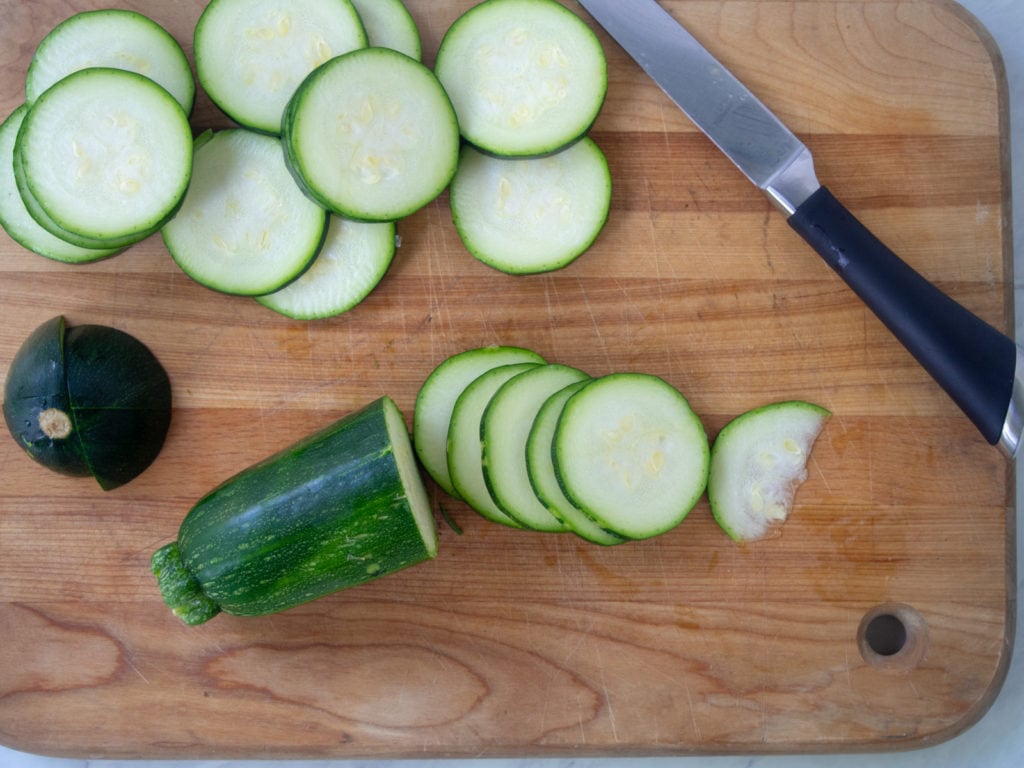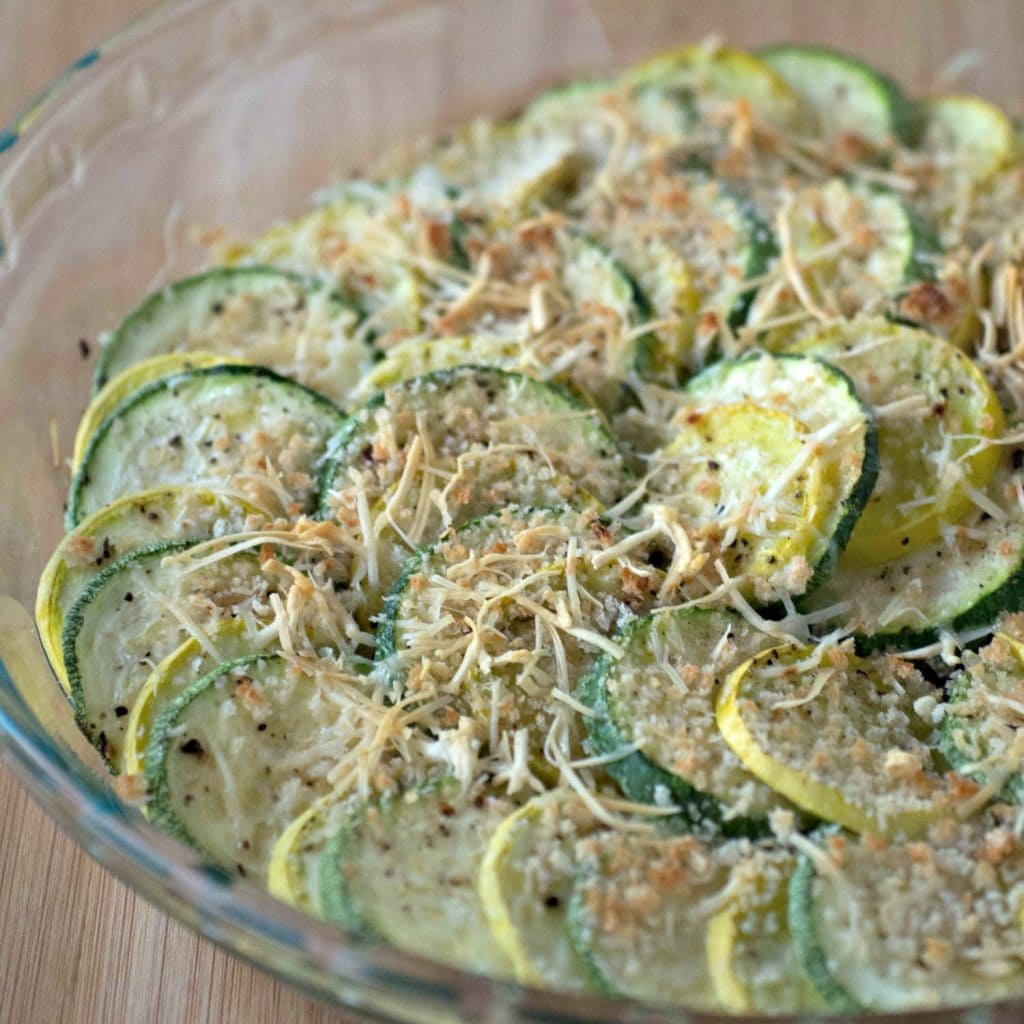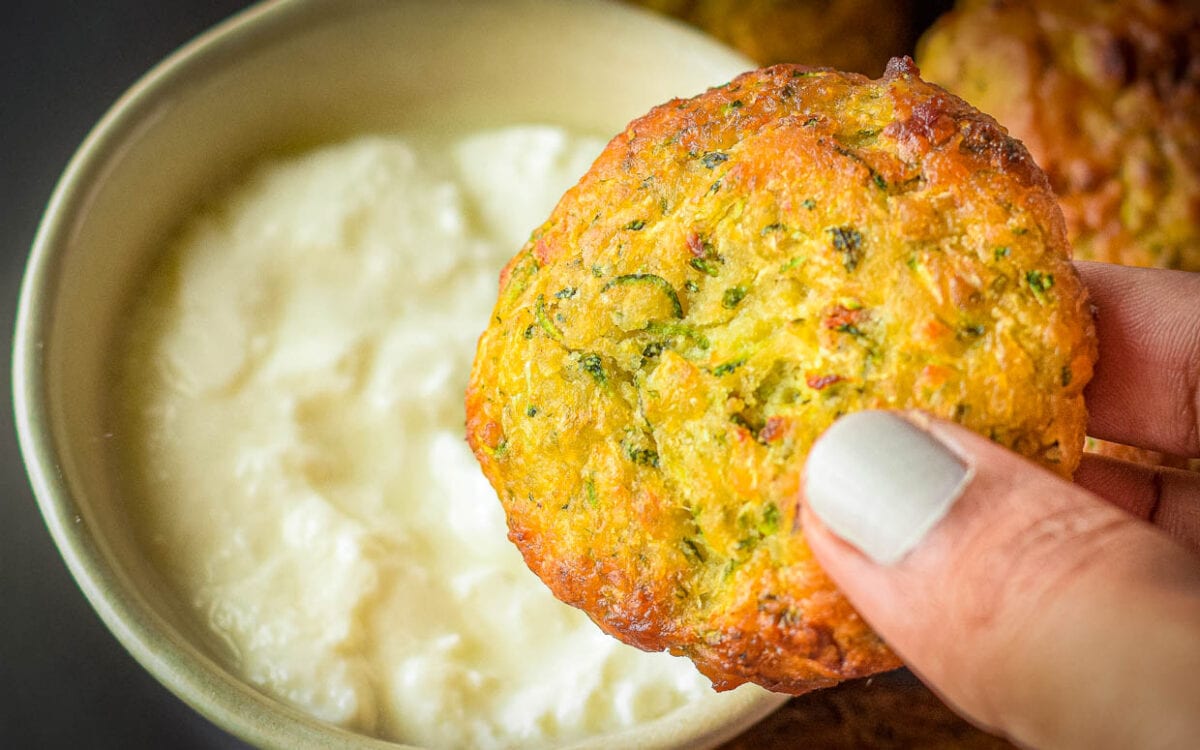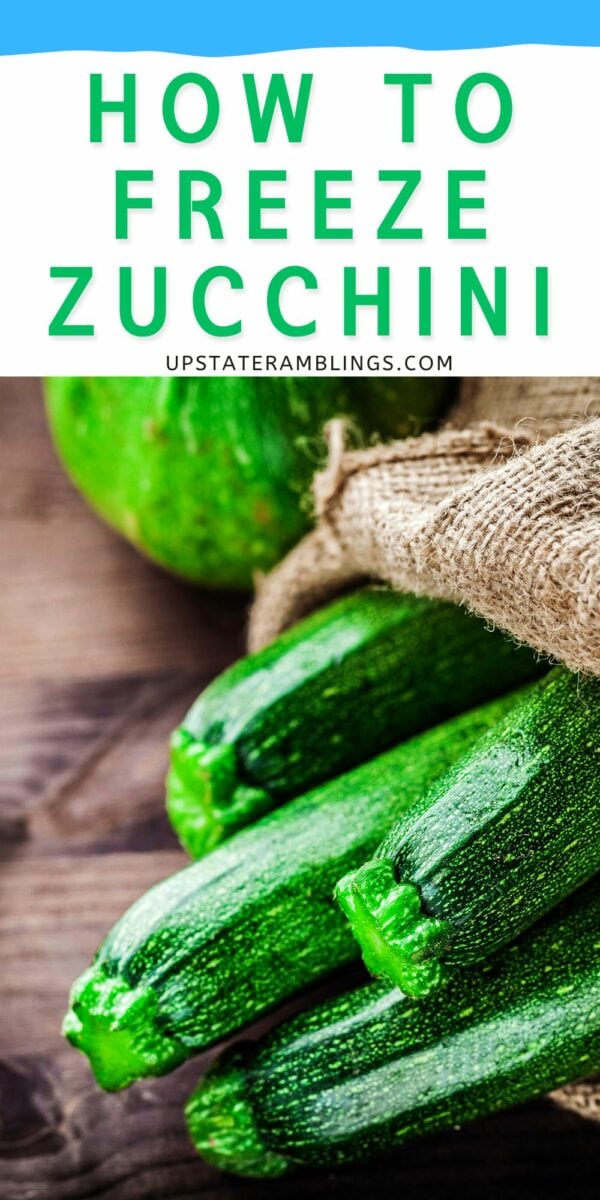Learn simple and practical methods for how to freeze zucchini for long-term storage. Whether you have a surplus from your garden or want to take advantage of zucchini’s availability during the peak summer season, freezing it properly is the key to extending its shelf life.
✅Key Takeaways
- Long-Term Preservation: Freezing zucchini allows for storage up to 10-12 months.
- Versatility in Cooking: Frozen zucchini can be used in various recipes like soups, stews, and casseroles, and retains most of its nutritional value.
- Proper Freezing Techniques: This article gives specific steps for freezing zucchini, including freezing sliced zucchini, freezing shredded zucchini and even freezing whole zucchini.
⭐Advantages of Freezing Zucchini
Freezing zucchini allows you to store zucchini for an extended period, typically up to 10 to 12 months, providing long-term storage for excess produce. This is especially useful when you have an overabundance of zucchini from your garden or found a great deal on zucchini from at your local farmer’s market.
Freezing zucchini is convenient, since it can be readily available whenever needed. You can enjoy zucchini dishes all year long without worrying about spoilage.
Another benefit is you can enjoy the nutritional benefits of zucchini even when it’s out of season.. While some nutrients may be lost during the blanching process, freezing effectively preserves most of the vitamins, minerals and antioxidants.
Frozen zucchini is versatile in cooking. It can be used in a variety of dishes such as soups, stews, stir-fries, casseroles, pasta sauces and even smoothies. By having a stock of frozen zucchini on hand, you can easily incorporate it into your recipes, enhancing their flavor, texture and nutritional profile.
Freezing food also minimizes waste. Instead of letting excess zucchini go bad, freezing it allows you to save it for future use.
⚠️Mistakes to Avoid When Freezing Zucchini
- Choose zucchini that is firm and free from any signs of spoilage or damage. Young zucchini with smaller seeds tend to freeze better.
- Zucchini has a high water content; freezing it can lead to ice crystal formation. To minimize this, remove excess moisture from the zucchini before packing it for freezing.
- Blanch zucchini before freezing to help retain the zucchini’s color, flavor and nutrients.
- Make sure to label each container or bag with the freezing date so you don’t end up with mystery bags of veggies in your freezer.
- Periodically check the stored zucchini for any signs of freezer burn. Freezer burn can occur if it’s not adequately sealed or stored for an extended period, and it may affect the taste and quality of the zucchini.

🔪How to Freeze Zucchini Slices
Follow these steps if you want to freeze zucchini slices:
- Wash and slice: Wash the zucchini thoroughly under running water. Trim the ends and cut the zucchini into slices or cubes of your desired thickness.
- Blanch: Bring a large pot of water to a boil and prepare an ice bath by filling a bowl with ice and water. Place the zucchini slices or cubes into the boiling water and blanch them for 1 to 2 minutes. Be sure not to blanch longer than 2 minutes to avoid the zucchini getting mushy.
- Ice bath: Using a slotted spoon or tongs, immediately transfer the blanched zucchini into the ice bath to cool them down quickly and stop cooking. Leave them in the ice bath for the same time they were blanched for.
- Drain excess moisture: Remove the zucchini pieces from the ice bath and drain them thoroughly once the zucchini pieces have cooled. Pat them dry with a clean kitchen towel or paper towel to remove excess moisture.
- Pack for freezing: Arrange the blanched and dried zucchini pieces in freezer-safe containers or resealable plastic bags. Squeeze out as much air as possible from the bags before sealing to minimize freezer burn.
- Label and freeze: Label each container or bag with the freezing date. Place the zucchini in the freezer and ensure they are laid flat in a single layer until they freeze solid.
- Store and use: Once frozen, you can stack the stored zucchini to save space.
✅Tasty Zucchini Recipes
Looking for some delicious zucchini recipes to make with your zucchini? Try zucchini fritters, zucchini and summer squash casserole or blueberry zucchini bread. Or check out my list of 31 zucchini recipes that are anything but boring!

🧊How to Freeze Shredded Zucchini
Follow these steps if you want to freeze shredded zucchini or zucchini noodles:
- Wash and shred: Wash the zucchini thoroughly under running water to remove any dirt or debris. Trim off both ends of the zucchini. Use a grater or a food processor with a shredding blade to shred the zucchini into fine pieces.
- Drain excess moisture: Place the shredded zucchini in a colander or strainer and let it sit for about 10 to 15 minutes. Press down gently on the zucchini with a clean cloth or paper towel to remove as much moisture as possible.
- Pack for freezing: Place the shredded zucchini into freezer-safe containers or resealable plastic bags. Squeeze out any excess air before sealing the containers or bags.
- Label and freeze: Label each container or bag with the contents and the freezing date. Place the containers or bags in the freezer, making sure they are placed in a flat position. Avoid stacking them until they are fully frozen. Allow the zucchini to freeze completely, which usually takes about 2 to 4 hours.
- Store and use: When you’re ready to use the frozen shredded zucchini, thaw it in the refrigerator overnight or use it directly in your recipe if it will be cooked or baked.
🥒How to Freeze Whole Zucchini
While whole zucchini can be frozen, sliced or shredded zucchini tends to freeze more evenly. If, however, you want to freeze whole zucchini, follow these steps:
- Wash and trim: Wash the zucchini thoroughly under running water to remove any dirt or debris. Trim off both ends of the zucchini.
- Pack for freezing: Place the whole zucchini in a freezer bag or airtight container. If using a freezer bag, remove as much air as possible before sealing.
- Label and freeze: Label the bag or container with the freezing date, then place it in the freezer.
❓How Long Does Frozen Zucchini Keep?
Like other frozen produce, zucchini can be stored in the freezer for up to 10 to 12 months.

🍲How Do You Use Frozen Zucchini in Cooking
To use the frozen zucchini, you can add them directly to soups, stews, stir-fries, casseroles or pasta sauces without thawing.
Consider using sliced zucchini straight from frozen in this sausage and veggies sheet pan dinner by roasting them in the oven. Or, use shredded zucchini straight from frozen in these zucchini bites or this zucchini pizza casserole. Zucchini bread made with frozen zucchini is also delicious.
“I love to freeze shredded zucchini. I throw it into all kinds of things. It’s a great way to add some healthy veg to omelets, quiche, muffins or breads. I don’t even bother to thaw it first. The key is making sure it’s pretty dry before you freeze it so that it doesn’t put off a ton of water when it thaws.”
— Robin Donovan, All Ways Delicious
If you prefer to thaw them before use, place the frozen zucchini in the refrigerator overnight or thaw them using the defrost setting on your microwave.
Remember that frozen zucchini may become softer upon thawing due to its high water content, making it best suited for cooked dishes rather than raw consumption.
💭Final Thoughts
Freezing zucchini is a practical and efficient method to preserve this versatile vegetable. It ensures its availability and quality even when it’s not in season, allowing you to enjoy zucchini year round while minimizing waste and retaining its nutritional benefits.
Sara Nelson is the food blogger behind Real Balanced, a site that shares easy and balanced recipes. Since 2017, she has shared delicious, nutritious and allergy-friendly recipes with thousands of blog readers and social media followers. Sara lives in Wisconsin with her husband, two children and their dog.
This article originally appeared on Food Drink Life.




